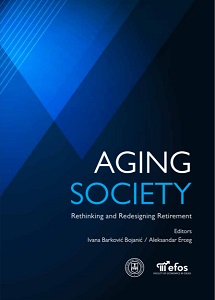THE ECONOMICS OF AGING AND MACROECONOMIC APPROACH
THE ECONOMICS OF AGING AND MACROECONOMIC APPROACH
Author(s): Dražen Barković
Subject(s): Methodology and research technology, Health and medicine and law, Demography and human biology, Gerontology, Socio-Economic Research
Published by: Sveučilište Josipa Jurja Strossmayera u Osijeku, Ekonomski fakultet u Osijeku
Keywords: aging; growth; Ramsey model; overlapping;
Summary/Abstract: Based on statistics, it is an indisputable fact that the world population is constantly aging, both in terms of the number and proportion of old people in the total population. Thus, population aging is becoming a significant social transformation that has implications for almost all sectors of society. Older people can be seen as contributors to the development involved in policies and programs at all levels. The inverted population pyramid is becoming increasingly apparent, creating difficulties in maintaining the health and pension systems, especially in countries where the share of the elderly has almost doubled. Recently, the perception of older people has changed. Regardless of the reduced abilities, it should not be forgotten that aging brings some values that integrate them into the social environment. One should not forget the acquired professional knowledge and experience, voluntary work and the like, which can contribute to economic growth. The discussions conducted by economists on the problem of age are predominantly neoclassical. The view from another angle comes from sociology authors, sociological politicians who themselves produced their own “older age policies”. In contrast to neoclassical individualism, the sociological picture of aging outlines the social construction of older age and the structural dependence of the elderly. At the heart of this paper is a view from modern macroeconomics that puts into the forefront a household that uses its intertemporal function to plan its consumption. Theoretical explanations are contained in four main modeling frameworks that have become central tools in economic and age studies: the Ramsay model, the generations model, the perpetual youth model, and the overlapping generations model.
Book: Aging Society - Rethinking and Redesigning Retirement
- Page Range: 125-138
- Page Count: 14
- Publication Year: 2020
- Language: English
- Content File-PDF

